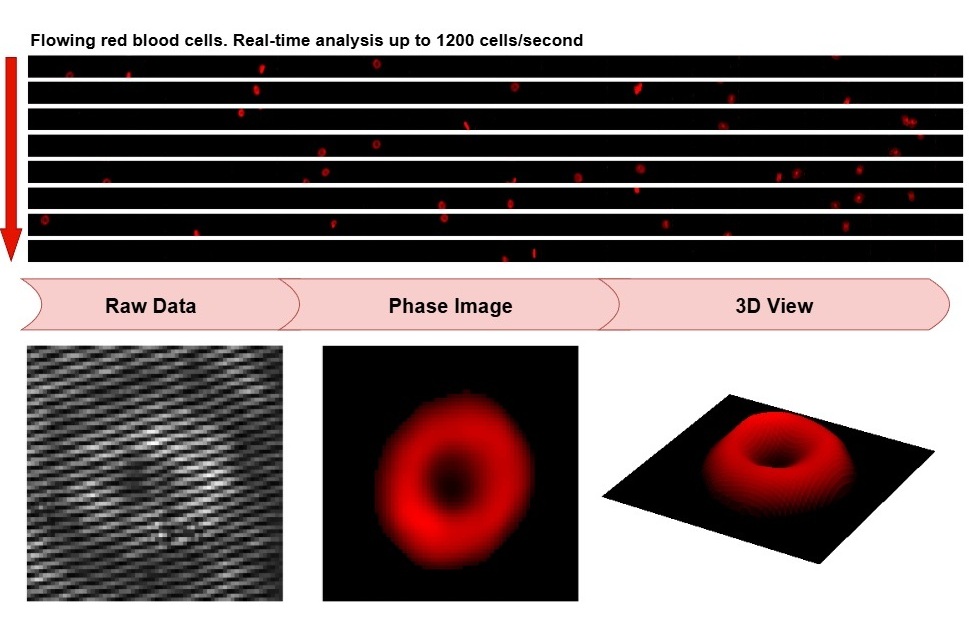Elevated Circulating Fatty Acid Synthase Is a Diagnostic Biomarker for Peripheral Artery Disease
|
By LabMedica International staff writers Posted on 11 Oct 2021 |

Image: Pictured is a cross section of a peripheral artery from the leg of a patient with chronic limb-threatening ischemia (CLTI), a condition in which heavy plaque formation causes a severe narrowing of the arteries (Photo courtesy of Zayed Research Laboratory, Washington University School of Medicine)
Elevated levels of a soluble form of the enzyme fatty acid synthase (sFSA) in the blood have been linked to development of the severe vascular disorder peripheral artery disease (PAD).
Fatty acid synthase is a multi-enzyme protein that catalyzes fatty acid synthesis. It is not a single enzyme but a whole enzymatic system composed of two identical multifunctional polypeptides, in which substrates are handed from one functional domain to the next. The main function of FSA is to catalyze the synthesis of palmitate (C16:0, a long-chain saturated fatty acid) from acetyl-CoA and malonyl-CoA, in the presence of NADPH.
In 2015, about 155 million people had PAD worldwide, and it becomes more common with age. In the developed world, PAD affects about 5.3% of 45- to 50-year-olds and 18.6% of 85- to 90-year-olds. In the United States PAD impacts some 12 million people. Among them at least 10% will progress to develop chronic limb-threatening ischemia (CLTI), a condition characterized by severe lower extremity arterial insufficiency, rest pain, non-healing wounds/ulcers, and gangrene.
There are currently no serum-based evaluations that can corroborate the severity of PAD. Therefore, in order to improve prognosis, the Global Vascular Guidelines recently highlighted the need for early diagnosis and aggressive medical management of patients. In this regard, investigators at Washington University School of Medicine (St. Louis, MO, USA) assessed the prevalence of elevated serum fatty acid synthase (cFAS) in patients with CLTI and evaluated the accuracy of its use in detecting this condition. This approach was based on prior studies showing that serum circulating FAS was elevated in patients with atherosclerotic carotid artery stenosis, and FAS content in carotid plaque was higher in maximally diseased segments.
For the current study, the investigators obtained and analyzed blood samples from 87 patients before they underwent vascular surgery to treat CLTI. Results revealed that elevated cFAS content, type II diabetes, and smoking were independently associated with CLTI and could detect the presence of CLTI with 83% accuracy. Levels cFAS in the blood were associated with the FAS content of plaque sampled from the femoral artery, the main vessel supplying blood to the legs. In addition, cFAS was found to circulate through the bloodstream while bound to the cholesterol transporter, low-density lipoprotein (LDL).
“These patients are at risk of losing their legs, which is devastating to quality of life,” said senior author Dr. Mohamed A. Zayed, associate professor of surgery and radiology at Washington University School of Medicine. “They lose their capacity to walk, and about half of them die within the next two years. We need to identify these patients sooner, so we can help treat them aggressively much earlier in the disease course. Our data suggest that levels of cFAS in the blood could be an accurate predictor for which patients are at high risk of the severe forms of this condition.”
“Oftentimes, I will see patients in my practice who have high LDL but are otherwise healthy individuals - they do not have evidence of disease in their arteries,” said Dr. Zayed. “Our guidelines tell us to be aggressive in treating these patients. But my suspicion is the problem is not just LDL. Rather, the problem is enzymes that are attached to LDL that are conferring the cardiovascular disease that we see, particularly in the peripheral arteries, as well as the coronary arteries that deliver blood to the heart and the carotid arteries that deliver blood to the brain.”
The study was published in the September 29, 2021, online edition of the journal Scientific Reports.
Related Links:
Washington University School of Medicine
Fatty acid synthase is a multi-enzyme protein that catalyzes fatty acid synthesis. It is not a single enzyme but a whole enzymatic system composed of two identical multifunctional polypeptides, in which substrates are handed from one functional domain to the next. The main function of FSA is to catalyze the synthesis of palmitate (C16:0, a long-chain saturated fatty acid) from acetyl-CoA and malonyl-CoA, in the presence of NADPH.
In 2015, about 155 million people had PAD worldwide, and it becomes more common with age. In the developed world, PAD affects about 5.3% of 45- to 50-year-olds and 18.6% of 85- to 90-year-olds. In the United States PAD impacts some 12 million people. Among them at least 10% will progress to develop chronic limb-threatening ischemia (CLTI), a condition characterized by severe lower extremity arterial insufficiency, rest pain, non-healing wounds/ulcers, and gangrene.
There are currently no serum-based evaluations that can corroborate the severity of PAD. Therefore, in order to improve prognosis, the Global Vascular Guidelines recently highlighted the need for early diagnosis and aggressive medical management of patients. In this regard, investigators at Washington University School of Medicine (St. Louis, MO, USA) assessed the prevalence of elevated serum fatty acid synthase (cFAS) in patients with CLTI and evaluated the accuracy of its use in detecting this condition. This approach was based on prior studies showing that serum circulating FAS was elevated in patients with atherosclerotic carotid artery stenosis, and FAS content in carotid plaque was higher in maximally diseased segments.
For the current study, the investigators obtained and analyzed blood samples from 87 patients before they underwent vascular surgery to treat CLTI. Results revealed that elevated cFAS content, type II diabetes, and smoking were independently associated with CLTI and could detect the presence of CLTI with 83% accuracy. Levels cFAS in the blood were associated with the FAS content of plaque sampled from the femoral artery, the main vessel supplying blood to the legs. In addition, cFAS was found to circulate through the bloodstream while bound to the cholesterol transporter, low-density lipoprotein (LDL).
“These patients are at risk of losing their legs, which is devastating to quality of life,” said senior author Dr. Mohamed A. Zayed, associate professor of surgery and radiology at Washington University School of Medicine. “They lose their capacity to walk, and about half of them die within the next two years. We need to identify these patients sooner, so we can help treat them aggressively much earlier in the disease course. Our data suggest that levels of cFAS in the blood could be an accurate predictor for which patients are at high risk of the severe forms of this condition.”
“Oftentimes, I will see patients in my practice who have high LDL but are otherwise healthy individuals - they do not have evidence of disease in their arteries,” said Dr. Zayed. “Our guidelines tell us to be aggressive in treating these patients. But my suspicion is the problem is not just LDL. Rather, the problem is enzymes that are attached to LDL that are conferring the cardiovascular disease that we see, particularly in the peripheral arteries, as well as the coronary arteries that deliver blood to the heart and the carotid arteries that deliver blood to the brain.”
The study was published in the September 29, 2021, online edition of the journal Scientific Reports.
Related Links:
Washington University School of Medicine
Latest Molecular Diagnostics News
- Fast Low-Cost Alzheimer’s Tests Could Detect Disease in Early and Silent Stages
- Further Investigation of FISH-Negative Tests for Renal Cell Carcinoma Improves Diagnostic Accuracy
- First Direct Measurement of Dementia-Linked Proteins to Enable Early Alzheimer’s Detection
- New Diagnostic Method Detects Pneumonia at POC in Low-Resource Settings
- Blood Immune Cell Analysis Detects Parkinson’s Before Symptoms Appear
- New Diagnostic Marker for Ovarian Cancer to Enable Early Disease Detection

- Urine Test Detects Early Stage Pancreatic Cancer
- Genomic Test Could Reduce Lymph Node Biopsy Surgery in Melanoma Patients
- Urine Test Could Replace Painful Kidney Biopsies for Lupus Patients
- Blood Test Guides Post-Surgical Immunotherapy for Muscle-Invasive Bladder Cancer
- Mitochondrial DNA Mutations from Kidney Stressors Could Predict Future Organ Decline
- Blood Test Could Predict Bariatric Surgery Outcomes in Teenagers
- ctDNA Blood Test to Help Personalize Postsurgical Colon Cancer Treatment
- AI Powered Blood Test Predicts Suicide Risk in Bipolar Patients
- DNA Sensor Enables Molecular Detection from Single Blood Drop
- DNA-Powered Test Accurately Detects E. Coli Lookalike Bacteria
Channels
Clinical Chemistry
view channel
VOCs Show Promise for Early Multi-Cancer Detection
Early cancer detection is critical to improving survival rates, but most current screening methods focus on individual cancer types and often involve invasive procedures. This makes it difficult to identify... Read more
Portable Raman Spectroscopy Offers Cost-Effective Kidney Disease Diagnosis at POC
Kidney disease is typically diagnosed through blood or urine tests, often when patients present with symptoms such as blood in urine, shortness of breath, or weight loss. While these tests are common,... Read moreHematology
view channel
ADLM’s New Coagulation Testing Guidance to Improve Care for Patients on Blood Thinners
Direct oral anticoagulants (DOACs) are one of the most common types of blood thinners. Patients take them to prevent a host of complications that could arise from blood clotting, including stroke, deep... Read more
Viscoelastic Testing Could Improve Treatment of Maternal Hemorrhage
Postpartum hemorrhage, severe bleeding after childbirth, remains one of the leading causes of maternal mortality worldwide, yet many of these deaths are preventable. Standard care can be hindered by delays... Read more
Pioneering Model Measures Radiation Exposure in Blood for Precise Cancer Treatments
Scientists have long focused on protecting organs near tumors during radiotherapy, but blood — a vital, circulating tissue — has largely been excluded from dose calculations. Each blood cell passing through... Read moreImmunology
view channel
Chip Captures Cancer Cells from Blood to Help Select Right Breast Cancer Treatment
Ductal carcinoma in situ (DCIS) accounts for about a quarter of all breast cancer cases and generally carries a good prognosis. This non-invasive form of the disease may or may not become life-threatening.... Read more
Blood-Based Liquid Biopsy Model Analyzes Immunotherapy Effectiveness
Immunotherapy has revolutionized cancer care by harnessing the immune system to fight tumors, yet predicting who will benefit remains a major challenge. Many patients undergo costly and taxing treatment... Read moreMicrobiology
view channel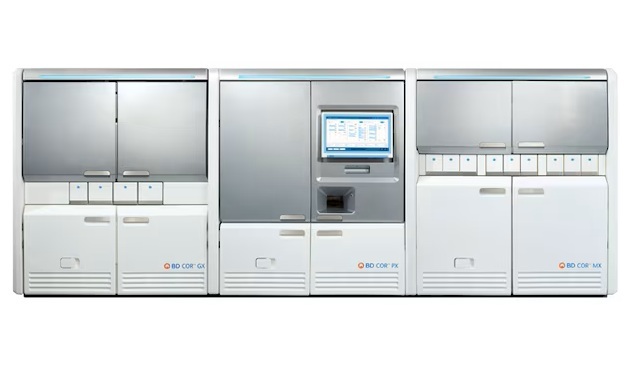
High-Throughput Enteric Panels Detect Multiple GI Bacterial Infections from Single Stool Swab Sample
Gastrointestinal (GI) infections are among the most common causes of illness worldwide, leading to over 1.7 million deaths annually and placing a heavy burden on healthcare systems. Conventional diagnostic... Read more
Fast Noninvasive Bedside Test Uses Sugar Fingerprint to Detect Fungal Infections
Candida bloodstream infections are a growing global health threat, causing an estimated 6 million cases and 3.8 million deaths annually. Hospitals are particularly vulnerable, as weakened patients after... Read morePathology
view channel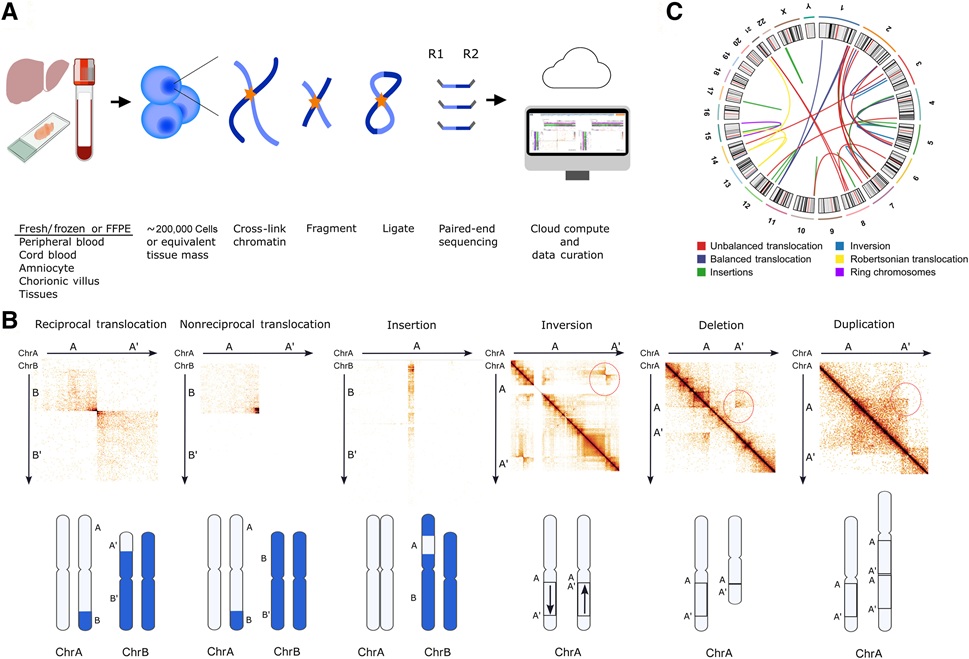
3D Genome Mapping Tool to Improve Diagnosis and Treatment of Genetic Diseases
Standard laboratory tests often fail to detect complex DNA rearrangements that underlie many genetic diseases. To bridge this diagnostic gap, researchers have developed a 3D chromosome mapping method that... Read more
New Molecular Analysis Tool to Improve Disease Diagnosis
Accurately distinguishing between similar biomolecules such as proteins is vital for biomedical research and diagnostics, yet existing analytical tools often fail to detect subtle structural or compositional... Read more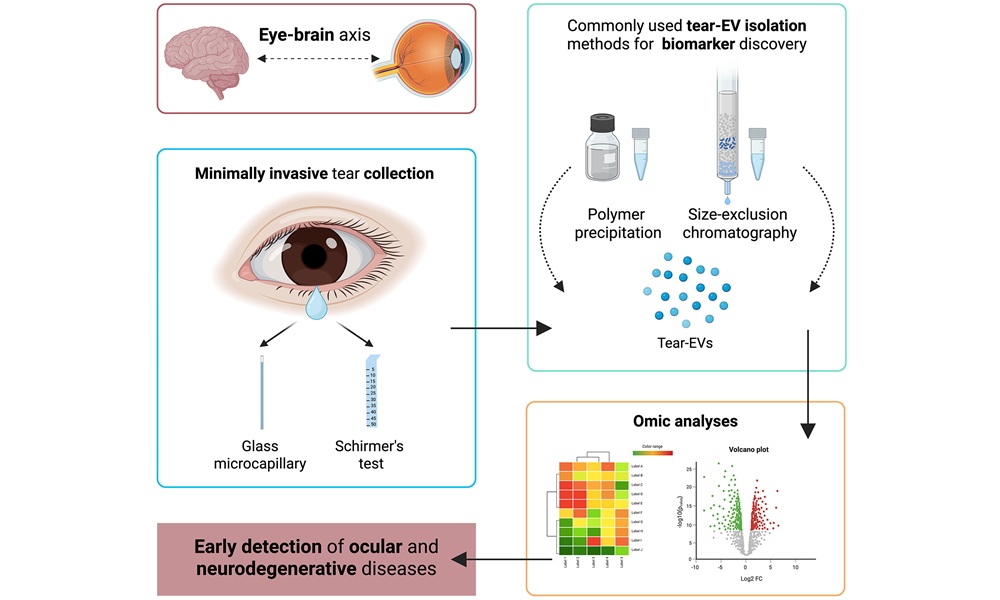
Tears Offer Noninvasive Alternative for Diagnosing Neurodegenerative Diseases
Diagnosing and monitoring eye and neurodegenerative diseases often requires invasive procedures to access ocular fluids. Ocular fluids like aqueous humor and vitreous humor contain valuable molecular information... Read moreTechnology
view channel
Portable Biosensor Diagnoses Psychiatric Disorders Using Saliva Samples
Early diagnosis of psychiatric disorders such as depression, schizophrenia, and bipolar disorder remains one of medicine’s most pressing challenges. Current diagnostic methods rely heavily on clinical... Read more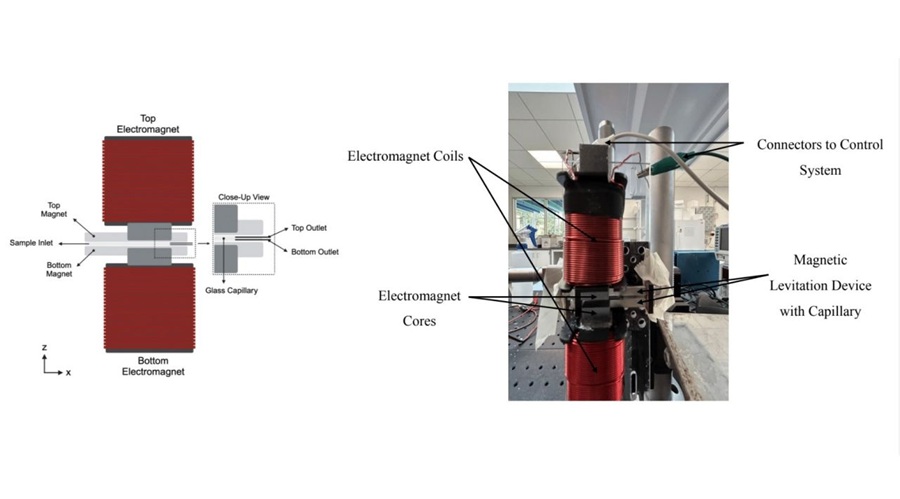
Cell-Sorting Device Uses Electromagnetic Levitation to Precisely Direct Cell Movement
Sorting different cell types—such as cancerous versus healthy or live versus dead cells—is a critical task in biology and medicine. However, conventional methods often require labeling, chemical exposure,... Read moreIndustry
view channel
Qiagen Acquires Single-Cell Omics Firm Parse Biosciences
QIAGEN (Venlo, Netherlands) has entered into a definitive agreement to fully acquire Parse Biosciences (Seattle, WA, USA), a provider of scalable, instrument-free solutions for single-cell research.... Read more
Puritan Medical Products Showcasing Innovation at AMP2025 in Boston
Puritan Medical Products (Guilford, ME, USA), the world’s most trusted manufacturer of swabs and specimen collection devices, is set to exhibit at AMP2025 in Boston, Massachusetts, from November 11–15.... Read more
Advanced Instruments Merged Under Nova Biomedical Name
Advanced Instruments (Norwood, MA, USA) and Nova Biomedical (Waltham, MA, USA) are now officially doing business under a single, unified brand. This transformation is expected to deliver greater value... Read more







 assay.jpg)











